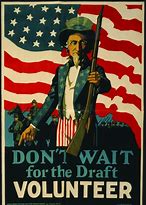Podcast: Play in new window | Download
Subscribe: RSS
This week, you will likely hear all you care to hear about professional sports drafts.
There are 32 NFL franchises who will draft for seven rounds in Nashville, Tennessee beginning this Thursday night (Round 1), Friday night (Rounds 2 and 3), and Saturday afternoon (Rounds 4-5-6-7). That means that a total of 224 jobs will be filled by the end of this weekend.
There are 130 major college football teams in the NCAA’s upper division. If you assume that there are (conservatively) 120 players on the rosters of each of those teams, then 15,600 football players are lined-up every fall to play major college football.
But wait, there’s more!
We haven’t included the number of smaller division schools. There are another 125 of FCS (formerly division 1-AA) teams plus another 400 Division II, III, and NAIA teams.
Let’s say there are 100 players on each of those teams. That would add another 52,500 college football players and bring the total number to 68,100 players.
If you assumed that 25% of these players become (theoretically) eligible to play professionally every year, that means that 17,025 players have the potential to be available to play for pay on Sundays beginning this fall.
If you take 224 jobs and divide by 17,025 potential players, only 1.3% of eligible college football players from last season will be drafted into the NFL this week. Yes, I realize that a large number of additional players will go undrafted but will make an NFL team, too.
According to the NCAA, the official probability of a college football player becoming a professional football player is only 1.6%.
Your best chance to advance from college into the professional sports ranks is in baseball (9.8%).
However…
You better hope for a large signing bonus from professional baseball, because the annual pay scale for most minor league baseball teams isn’t much better than going to work for $10 per hour at McDonald’s. By the time you climb through the ranks and reach Triple A baseball (one step from the major leagues), your annual pay will have reached only about $40,000/year.
If you are fortunate enough to finally make it to baseball’s major leagues, players are now taking home an average of $4.36 million per year with the MLB minimum salary of $555,000 per season.
One of the most famous baseball players of the past year was a player who may never suit up in a major league uniform. Baseball’s Oakland Athletics drafted Oklahoma University’s Kyler Murray in the first round (ninth overall pick in 2018), but the team was unable to convince him to stick to baseball even with a $4.66 million signing bonus to put in the bank.
Kyler Murray also won the Heisman trophy as a college football quarterback. It is nearly a certainty that Murray will be drafted to play football in the NFL during Thursday night’s first round.
Based on 2018’s first round signings, Murray could make up to $23 million as a signing bonus to play four or five years in the NFL.
If Kyler Murray’s personal objective is to guarantee that he will be able to snag the most money before even having to hit the field, the NFL offers the most riches in the short term and seems the way to go.
Now let’s move to basketball.
On Monday night, the door was officially closed for college basketball players who want to try their hand at the professional level next season.
My unofficial count showed 139 basketball players who are hoping their name is called in the NBA’s annual draft on June 20. Alas, there are only 30 NBA teams and just two rounds of draft selections.
That’s a maximum of sixty jobs to fill at the NBA’s draft party in June.
Don’t forget that there are also many graduating seniors who are also eligible to be drafted in June. Plus, there are an ever-increasing number of foreign players from Europe and other countries who may hear their name called on the NBA’s draft night in June.
Let’s say that 30 of the 139 early entrants in the NBA draft are picked in the two rounds. That means that some of the other 109 players can (a) try-out as a free agent or (b) go to Europe or China to play or (c) find a job doing something other than playing basketball.
The NBA’s early entrance requirements are quite complicated. Many of these 139 young players will learn in the next few weeks that the NBA is yawning and disinterested as they showcase their talents in various tryouts.
Between now and the June 20 NBA draft, the league will provide “draft evaluations” for these players who want to compete in the NBA or even in their minor league system called the “G” (as in financial sponsor “Gatorade”) League.
If the early entrance hoopsters follow the complicated NCAA rules properly (hint – I suggest they get an attorney first), then some of the players who are given the proverbial “Don’t call us, we’ll call you” response from NBA scouts will be permitted to return to school (if they are academically qualified) and continue playing basketball in college next season.
Given the large number of colleges who field a men’s basketball team, the NCAA lists the odds of a player making the squad of an NBA team at just 1.2%.
With the NFL draft this week and the NBA’s draft coming in June, it is a sad reality that less than 2% of all college football and basketball athletes will be playing professionally some day.
Let’s hope that the other 98% of these young student-athletes will take full advantage of the academic opportunities being offered to them.

